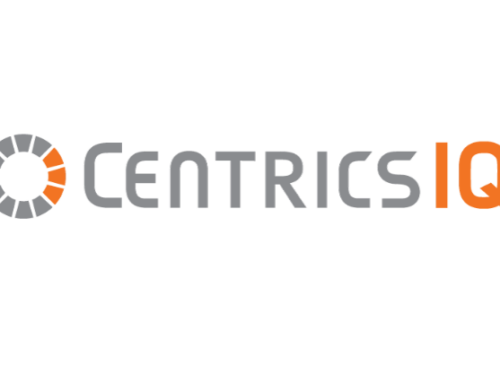Take 5 minutes to read this article
A couple of years ago, the Device-as-a-Service concept would have just sounded like another tech vendor’s overzealous attempt to board the -as-a-Service train. Fast forward one pandemic later, it’s increasingly looking like the perfect answer to meeting a wide range of End User Computing (EUC) needs in these uncertain times and beyond.
What is Device as a Service (DaaS)?
Unless you’ve been living under rock, you likely already know what it means whenever tech vendors slap something with the as-a-service tag. So, yes, Device-as-a-Service or DaaS is an offering wherein EUC devices like laptops, PCs, tablets, or phones are paid on more flexible terms. Just like all other as-a-Service offerings (e.g. Software-as-a-Service, Security-as-a-Service, Infrastructure-as-a-Service, etc), DaaS requires minimal upfront cost. Instead of making a large capital outlay, you pay on a periodic basis, say monthly or annually. The devices, along with the software running on them, are provisioned, deployed, maintained, secured, and so on, by a DaaS service provider.
A healthier cash flow
DaaS shifts your financial model from capital expenditure (CAPEX) to operating expenditure (OPEX). We can see the advantage of this OPEX-based model if we analyze what companies did at the start of the pandemic as well as what several companies continue doing now.
As governments scrambled to limit the spread of the virus, businesses rushed to send employees home and have them work remotely. Because not everyone had a personally-owned computer to work with, a lot of businesses were forced to purchase new EUC devices like laptops, PCs, tablets, and phones for their remote workforce.
These purchases naturally amounted to a costly CAPEX that put more pressure on an anemic cash flow already severely weakened by the loss of revenue caused by the pandemic-initiated economic downturn. Meanwhile, existing PCs that were left in the office became underutilized. That’s not all. Businesses also ran the risk of over purchasing devices per employee. If users showed more than one user device on the network (even though they were only physically using one), procurement bought more than one.
If only DaaS had already gone mainstream prior to COVID, things would have been a lot easier. Instead of having to shell out a sizable capital outlay, companies would have simply had to pay monthly or annually at a much lower cost. This would have allowed them to have a healthier cash flow.
Better yet, because DaaS subscriptions can be terminated once the need subsides — like if (hopefully) things get back to normal and employees no longer have to work remotely —, cash flow can breathe easier even faster.
Even without a pandemic, DaaS still makes a lot of sense. In addition to enabling a ‘healthier cash flow’, DaaS brings several other business benefits. Let’s take a look at some of them.
High availability of devices
When something goes wrong with a device (e.g the hard disk crashes, it gets infected with ransomware, etc.), what do we do in the current set up? We file a support ticket and go through the usual bureaucratic red tape. And then, depending on the severity of the issue, we wait for days or weeks before we get our device back. This can cause a lot of downtime.
In a DaaS setting, the devices and the software running on them are monitored and maintained by the DaaS service provider to ensure they are running optimally at all times. This reduces the likelihood of a crash. If something does go wrong that would render the device completely unusable, some service provider can issue a replacement in just a few hours or a couple of days.
Streamlined IT staff workload
Generally speaking, in-house IT staff are severely overloaded. Worse, most of the ‘work’ they do on a daily basis is really just firefighting, i.e. responding to help desk tickets, troubleshooting issues, patching software, and so on. Very minimal time is allocated to innovative endeavors.
With DaaS, IT staff are freed up from practically all of the tasks that have to do with EUC devices. Remember that the service provider takes care of a laundry list of responsibilities including: provisioning, deploying, maintaining, securing, etc., the EUC hardware and software; virus management; pushing updates; and many others. This allows IT staff to provide much-needed support to projects that actually contribute to the bottomline.
Heightened security and compliance capabilities
Many companies lack the in-house talent to meet stringent security and compliance requirements for EUC devices. That’s because these areas are simply not among their core competencies. A DaaS arrangement fixes this because the service provider may have security experts along with the infrastructure to harden and monitor devices so that they meet strict security and compliance requirements at all times.
How CentricsIT can help you leverage DaaS to streamline your EUC needs
In its simplest form, DaaS is just a paid subscription service for devices. What could really make a difference is the service provider offering that service . Some providers can add substantially more value to a DaaS offering if they are also capable of providing services that complement the DaaS offering.
CentricsIT can help you in that regard. Backed by over a decade of extensive experience in managed IT services and end user device management, we provide a full managed service per device. This means, we take care of practically everything throughout each device’s life cycle, from acquisition, through provisioning, deployment, maintenance, patching, securing, to even disposition (when the device reaches end-of-life). Better yet, we can help you plan for and carry out your transition to DaaS.
Want to learn more, feel free to contact us.





